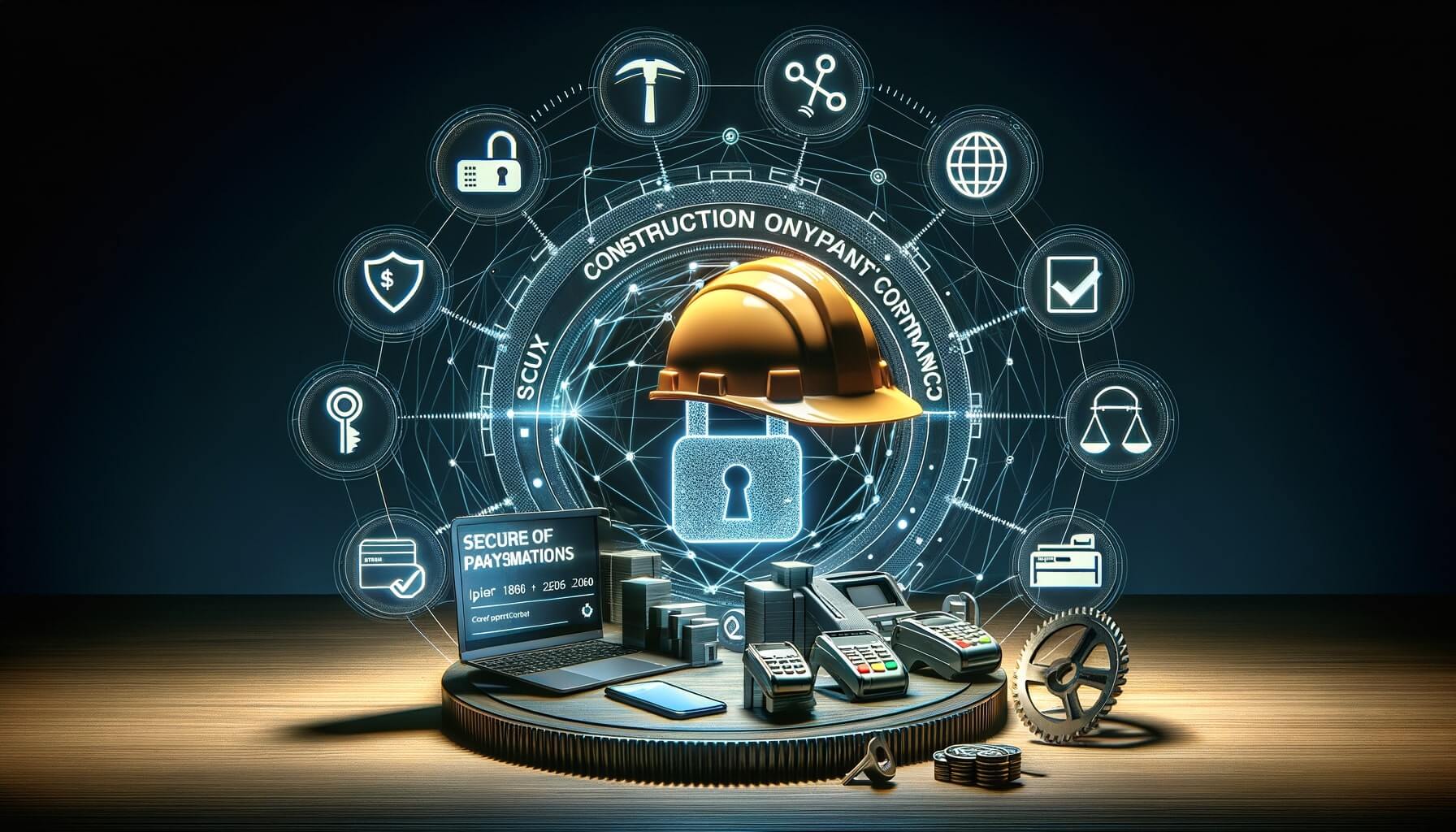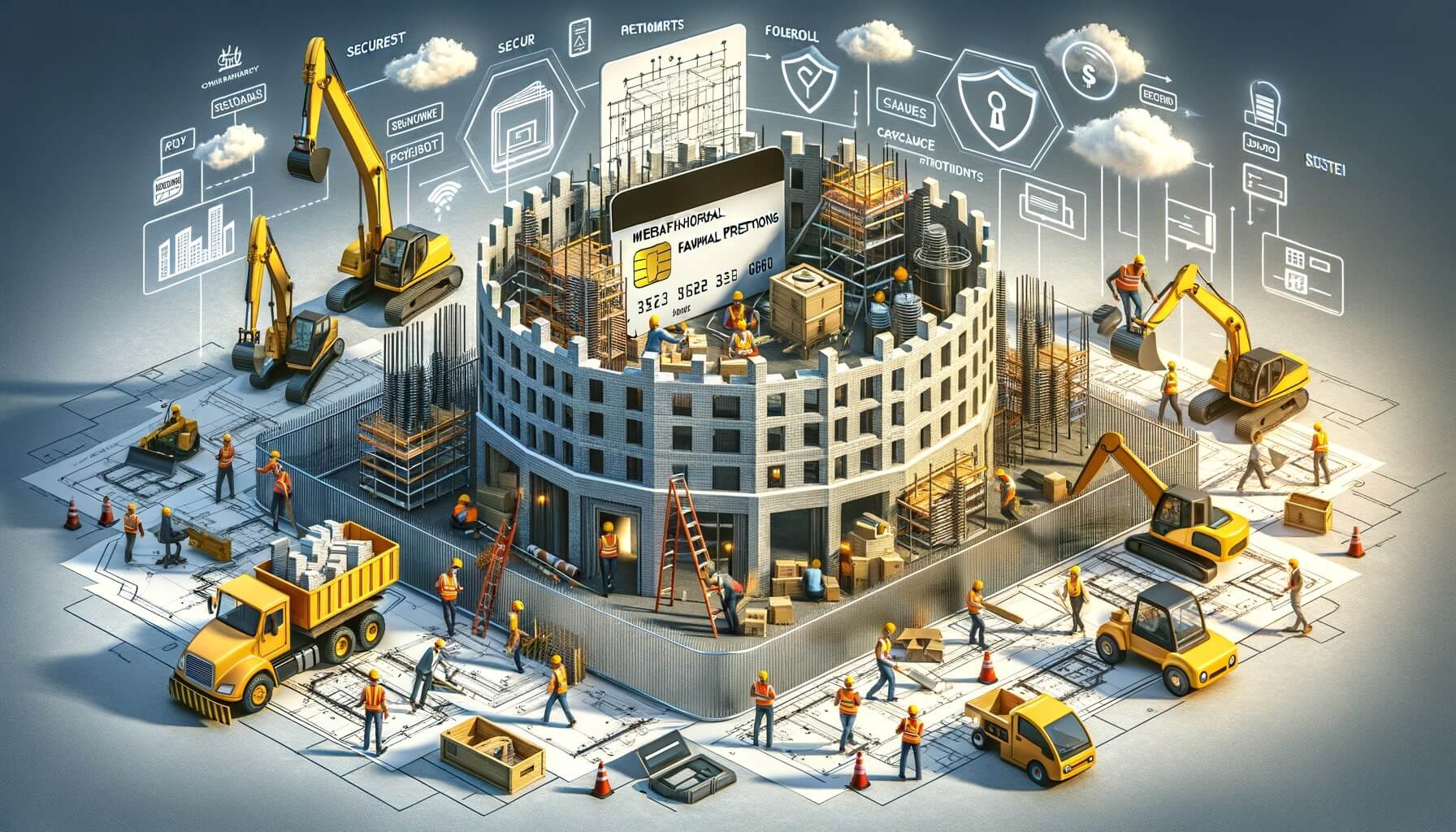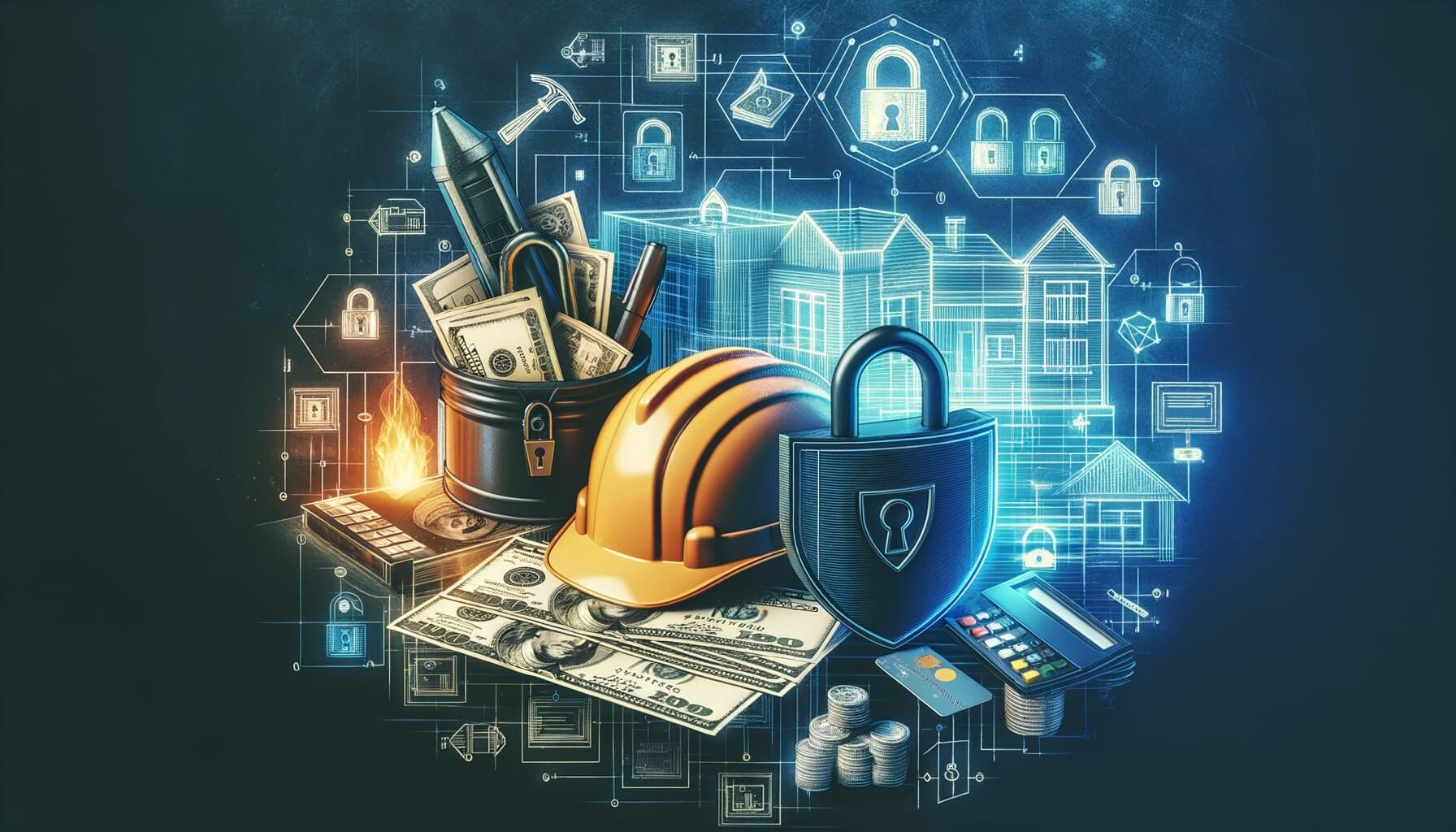
By alphacardprocess February 1, 2025
In today’s digital age, the security of payment systems is of utmost importance for businesses across all industries, including the construction sector. Construction companies handle a significant amount of sensitive financial information, making them prime targets for cybercriminals. To protect themselves and their clients, construction businesses must adhere to Payment Card Industry Data Security Standard (PCI DSS) compliance.
This comprehensive article will provide an in-depth understanding of PCI compliance and its significance for construction companies.
What is PCI Compliance and Why is it Essential for Construction Businesses?

PCI compliance refers to the set of security standards established by the Payment Card Industry Security Standards Council (PCI SSC) to ensure the protection of cardholder data during payment transactions. Compliance with these standards is essential for construction businesses as it helps safeguard sensitive financial information, reduces the risk of data breaches, and maintains customer trust.
The construction industry relies heavily on credit and debit card payments for various transactions, including purchasing materials, paying subcontractors, and receiving payments from clients. With the increasing prevalence of online payments and the use of mobile devices, the risk of data breaches and cyberattacks has also risen. Construction companies that fail to comply with PCI standards not only put their own financial data at risk but also jeopardize the security of their clients’ information.
The Key Requirements of PCI Compliance for Construction Companies

To achieve PCI compliance, construction businesses must meet a set of requirements outlined by the PCI SSC. These requirements include building and maintaining a secure network, protecting cardholder data, implementing strong access control measures, regularly monitoring and testing networks, and maintaining an information security policy.
Building a secure network involves installing and maintaining a firewall configuration to protect cardholder data. Construction companies must also ensure that they use unique passwords and other security parameters to restrict access to cardholder information. Additionally, they must encrypt transmission of cardholder data across open, public networks to prevent unauthorized access.
Protecting cardholder data is another crucial aspect of PCI compliance. Construction businesses must implement measures such as encryption and tokenization to ensure that sensitive information is securely stored and transmitted. Encryption converts data into a format that is unreadable to unauthorized individuals, while tokenization replaces cardholder data with unique identification symbols, reducing the risk of data theft.
Access control measures play a vital role in maintaining PCI compliance. Construction companies must restrict access to cardholder data on a need-to-know basis, assigning unique IDs to each employee with computer access. Regularly monitoring and testing networks is also essential to identify vulnerabilities and potential threats. This includes conducting regular security audits, vulnerability scans, and penetration testing to ensure the integrity of the payment systems.
Assessing Your Construction Payment Systems: Identifying Vulnerabilities and Risks

Before implementing PCI compliance measures, construction businesses must assess their payment systems to identify vulnerabilities and risks. This assessment involves conducting a thorough review of the current payment infrastructure, including hardware, software, and processes.
One common vulnerability in construction payment systems is the use of outdated or unsupported software. Legacy systems may lack the necessary security features to protect against modern cyber threats. It is crucial for construction companies to ensure that their payment systems are up to date and supported by the software provider.
Another potential risk is the storage of cardholder data. Construction businesses must evaluate whether they are storing unnecessary cardholder data and take steps to minimize the amount of sensitive information they retain. By implementing tokenization or encryption, construction companies can reduce the risk of data breaches and limit their liability in the event of a security incident.
Additionally, construction businesses should assess the physical security of their payment systems. This includes evaluating the security of card readers, point-of-sale terminals, and other devices used to process payments. Ensuring that these devices are tamper-proof and regularly inspected for any signs of tampering is crucial to maintaining PCI compliance.
Implementing PCI DSS: Step-by-Step Guide for Construction Businesses
Implementing PCI DSS can be a complex process, but with careful planning and execution, construction businesses can achieve and maintain compliance. Here is a step-by-step guide to help construction companies navigate the implementation process:
1. Determine the scope: Identify the systems, processes, and personnel that are involved in payment card processing. This will help define the scope of the PCI compliance efforts.
2. Conduct a risk assessment: Evaluate the potential risks and vulnerabilities in your payment systems. This assessment will help prioritize security measures and allocate resources effectively.
3. Develop a security policy: Create a comprehensive security policy that outlines the procedures and protocols for handling cardholder data. This policy should be communicated to all employees and contractors involved in payment processing.
4. Implement security measures: Install and configure firewalls, encryption software, and other security tools to protect cardholder data. Regularly update and patch software to address any known vulnerabilities.
5. Train employees: Provide training and education to all employees who handle payment card data. This should include best practices for data security, password management, and recognizing potential phishing or social engineering attacks.
6. Regularly monitor and test systems: Implement a system for monitoring and logging all access to cardholder data. Conduct regular vulnerability scans and penetration tests to identify and address any weaknesses in your payment systems.
7. Maintain compliance: Regularly review and update your security policies and procedures to ensure ongoing compliance with PCI DSS. Conduct annual audits and assessments to validate your compliance status.
Best Practices for Securing Construction Payments: Encryption, Tokenization, and Beyond

In addition to meeting the minimum requirements of PCI compliance, construction businesses can implement additional best practices to enhance the security of their payment systems. Encryption and tokenization are two widely used techniques that provide an extra layer of protection for cardholder data.
Encryption involves converting sensitive information into an unreadable format using cryptographic algorithms. This ensures that even if the data is intercepted, it cannot be deciphered without the encryption key. Construction companies should implement end-to-end encryption to protect cardholder data throughout the entire payment process.
Tokenization, on the other hand, replaces cardholder data with unique identification symbols called tokens. These tokens are meaningless to unauthorized individuals and cannot be used to retrieve the original cardholder data. By implementing tokenization, construction businesses can reduce the risk of data breaches and limit their liability in the event of a security incident.
Training and Educating Your Construction Staff on PCI Compliance
Ensuring that all employees are well-informed and trained on PCI compliance is crucial for maintaining the security of construction payment systems. Construction businesses should provide comprehensive training programs that cover the basics of PCI compliance, best practices for data security, and how to recognize and respond to potential security threats.
Employees should be educated on the importance of protecting cardholder data and the potential consequences of non-compliance. Training should also cover topics such as password management, secure network usage, and the proper handling of payment card information.
Regular refresher training sessions should be conducted to keep employees up to date with the latest security protocols and industry trends. By investing in employee education, construction businesses can create a culture of security awareness and reduce the risk of human error leading to data breaches.
Maintaining PCI Compliance: Regular Audits, Assessments, and Updates
Achieving PCI compliance is not a one-time effort; it requires ongoing maintenance and monitoring. Construction businesses must conduct regular audits and assessments to ensure that their payment systems continue to meet the PCI DSS requirements.
Annual audits should be conducted by a qualified security assessor (QSA) to validate compliance and identify any areas that need improvement. These audits involve a thorough review of the payment infrastructure, policies, and procedures, as well as testing the effectiveness of security controls.
In addition to annual audits, construction businesses should conduct regular vulnerability scans and penetration tests to identify and address any weaknesses in their payment systems. These tests simulate real-world attacks to assess the effectiveness of security measures and identify potential vulnerabilities.
It is also crucial to stay updated with the latest PCI DSS requirements and industry best practices. The PCI SSC regularly releases updates and new versions of the standards to address emerging threats and technologies. Construction businesses must stay informed and implement any necessary changes to maintain compliance.
Common Challenges and Pitfalls in Achieving PCI Compliance in the Construction Industry
While achieving PCI compliance is essential for construction businesses, it can be challenging due to various factors specific to the industry. Some common challenges and pitfalls include:
1. Legacy systems: Many construction companies still rely on outdated payment systems that may not meet the security requirements of PCI DSS. Upgrading these systems can be costly and time-consuming.
2. Remote job sites: Construction projects often take place in remote locations, making it challenging to maintain secure network connections and protect cardholder data.
3. Third-party vendors: Construction companies often work with subcontractors and suppliers who may have access to cardholder data. Ensuring that these third parties also comply with PCI DSS can be a complex task.
4. Employee turnover: The construction industry experiences high turnover rates, which can make it challenging to maintain consistent training and awareness programs for PCI compliance.
To overcome these challenges, construction businesses should prioritize the security of their payment systems from the outset. This includes investing in modern payment technologies, implementing secure network connections for remote job sites, and conducting due diligence when selecting third-party vendors.
FAQs
Q1. What is PCI compliance?
PCI compliance refers to the set of security standards established by the Payment Card Industry Security Standards Council (PCI SSC) to ensure the protection of cardholder data during payment transactions.
Q2. Why is PCI compliance important for construction businesses?
PCI compliance is essential for construction businesses as it helps safeguard sensitive financial information, reduces the risk of data breaches, and maintains customer trust.
Q3. What are the key requirements of PCI compliance for construction companies?
The key requirements of PCI compliance for construction companies include building and maintaining a secure network, protecting cardholder data, implementing strong access control measures, regularly monitoring and testing networks, and maintaining an information security policy.
Q4. How can construction businesses assess their payment systems for vulnerabilities and risks?
Construction businesses can assess their payment systems by conducting a thorough review of the current payment infrastructure, including hardware, software, and processes. They should also evaluate the physical security of their payment systems and assess the storage of cardholder data.
Q5. What are some best practices for securing construction payments?
Some best practices for securing construction payments include implementing encryption and tokenization, regularly updating software, conducting vulnerability scans and penetration tests, and providing comprehensive training and education to employees.
Conclusion
Securing construction payments is of paramount importance in today’s digital landscape. Construction businesses must prioritize PCI compliance to protect sensitive financial information, reduce the risk of data breaches, and maintain customer trust. By understanding the importance of PCI compliance, implementing the key requirements, assessing payment systems for vulnerabilities, and following best practices, construction companies can ensure the security of their payment processes.
Regular training, audits, and updates are essential for maintaining compliance and staying ahead of emerging threats. By taking proactive measures to secure construction payments, businesses can safeguard their financial data and protect the interests of their clients.